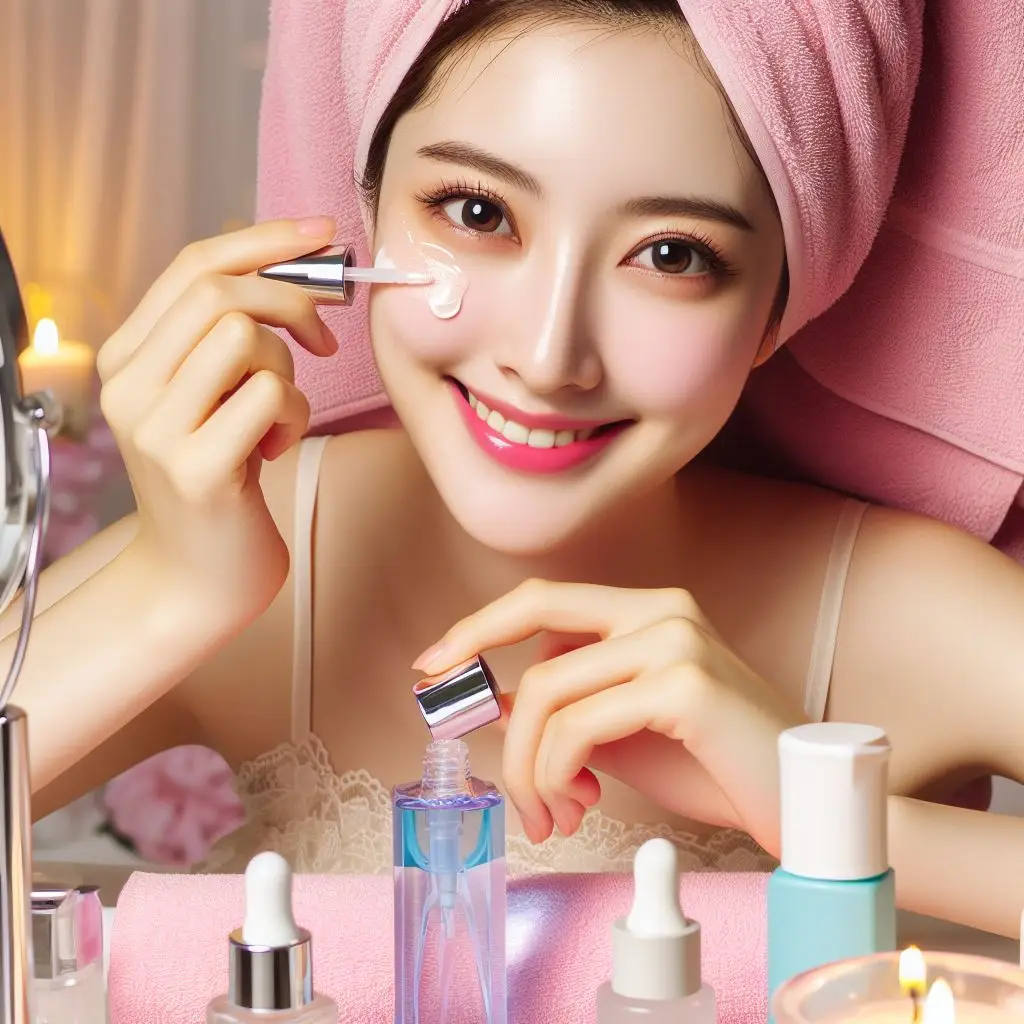What is hyaluronic acid (HA)?
Hyaluronic Acid, or HA, is a natural substance found in our skin that helps keep it hydrated and elastic. When applied to the skin, it aims to restore its moisture levels. Known for its incredible ability to hold water—about 1000 times its weight—it’s a great ingredient for hydrating and fighting signs of aging.
You’ll find it in lots of skincare products claiming to reduce puffiness, improve skin hydration, smooth wrinkles, and make the skin firmer. It’s even used in wound healing and some medical treatments. Using HA on your skin has been proven to make it more hydrated.
But not all HA in products can penetrate deeper into our skin, that is, it can’t reach the deeper layers of the skin (dermis), despite what some brands claim. This is because of the large molecular size of HA. In many moisturizers, the HA molecules are quite large. This size issue makes it tough for them to penetrate deeply into your skin. However, some studies argue that smaller versions of HA might have better luck making their way into the skin’s top layer (epidermis) when they’re formulated just right.
Understanding HA’s Influence on Different Skin Types and Environments
The humectant prowess of HA, binding water effectively, enhances skin hydration significantly. However, its performance varies based on environmental conditions and skin types.
humectant – Humectants are substances that pull moisture to the skin
For instance, HA functions best as a hydrating agent in humid environments. In dry conditions, it can inadvertently draw moisture from the skin into itself, leading to skin dehydration. Therefore, it’s prudent to pair HA with occlusive ingredients in dry environments to retain skin moisture. Those with oily skin types usually have adequate sebum, which have some occlusive properties, enabling them to use HA in various environments. Contrastingly, individuals with dry skin should avoid using HA in dry settings unless it’s combined with occlusive agents to prevent moisture loss.
Occlusives – Occlusive ingredients create a physical barrier on top of the skin to keep skin moist and hydrated
When applied in a humid environment, HA draws water to the skin, offering immediate improvements in reducing wrinkles. Yet, its efficacy diminishes in low-humidity atmospheres due to a scarcity of moisture to draw into the skin.
Hyaluronic Acid in Skincare Formulation
Hyaluronic Acid (HA) is a crucial component in our skin, but when applied topically, its large size usually hampers its ability to reach deeper layers. However, using smaller-sized versions can penetrate the outer layer of the skin (epidermis), offering a quick yet temporary reduction in fine lines by boosting skin hydration. Remember, not all HA is the same due to differences in how it’s processed, impacting its effectiveness.
Furthermore, HA isn’t just about skincare; it can also assist in enhancing the absorption of other skincare products. For instance, pairing it with a retinol-based product might boost the absorption of retinol into your skin.
Studies have explored HA’s anti-aging potential, indicating significant improvements in skin hydration, elasticity, and wrinkle reduction, especially with lower molecular weight HA formulations. These formulations showed promising results in reducing wrinkle depth, possibly because they can penetrate into the skin. Humidity levels also play a role, with higher humidity potentially amplifying HA’s effectiveness in anti-aging efforts.
Summary
Hyaluronic Acid (HA) is a crucial element for maintaining youthful, hydrated skin. Unfortunately, as we age, our skin’s HA levels decline, impacting its volume and appearance. While HA is famed for its use in dermal fillers, it’s also a staple in topical skincare products, prized for its moisturizing abilities. However, the effectiveness of topically applied HA hinges on factors like molecule size, alterations in its chemical structure, and the surrounding humidity.
The challenge with topical HA lies in its molecule size; it often struggles to deeply penetrate beyond the outer skin layer (epidermis). Although it excels in enhancing drug delivery to this surface layer, it doesn’t replicate the volumizing effects achieved with injectable HA treatments. Realistic expectations are essential: most topical HA products primarily offer temporary surface hydration rather than drastic anti-aging transformations. While newer, lower molecular weight formulations show promise in penetrating better, substantial anti-aging claims are usually exaggerated or necessitate professional HA filler injections for significant, long-term changes.
Misleading marketing claims sometimes overstate what topical HA can accomplish. In reality, its core benefit lies in skin hydration, especially in normal or humid environments. Any anti-aging benefits are mainly linked to improved skin hydration, delivering temporary enhancements. It’s crucial to differentiate this topical use of HA from its injectable form, as they serve different purposes altogether.


